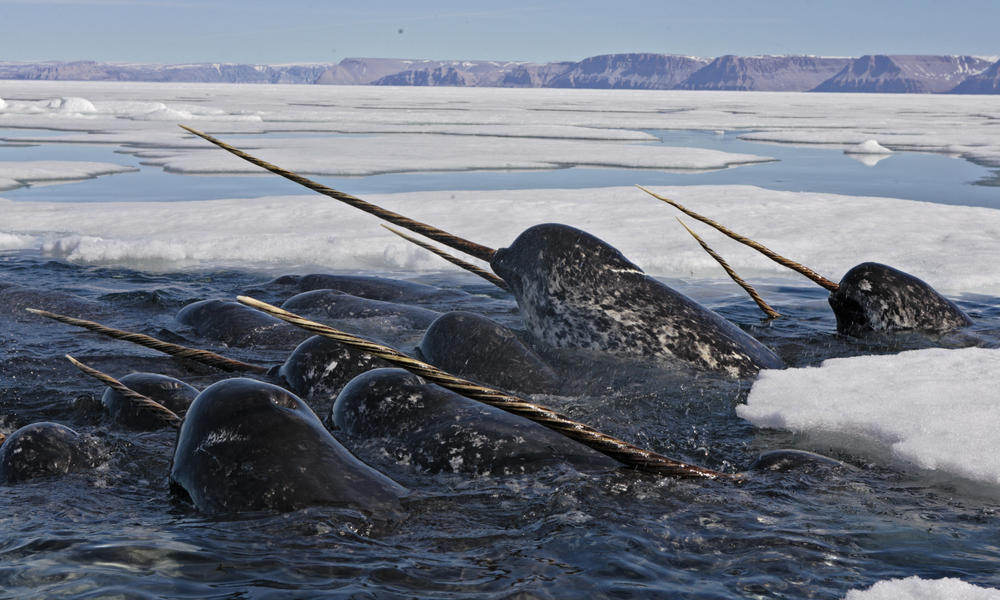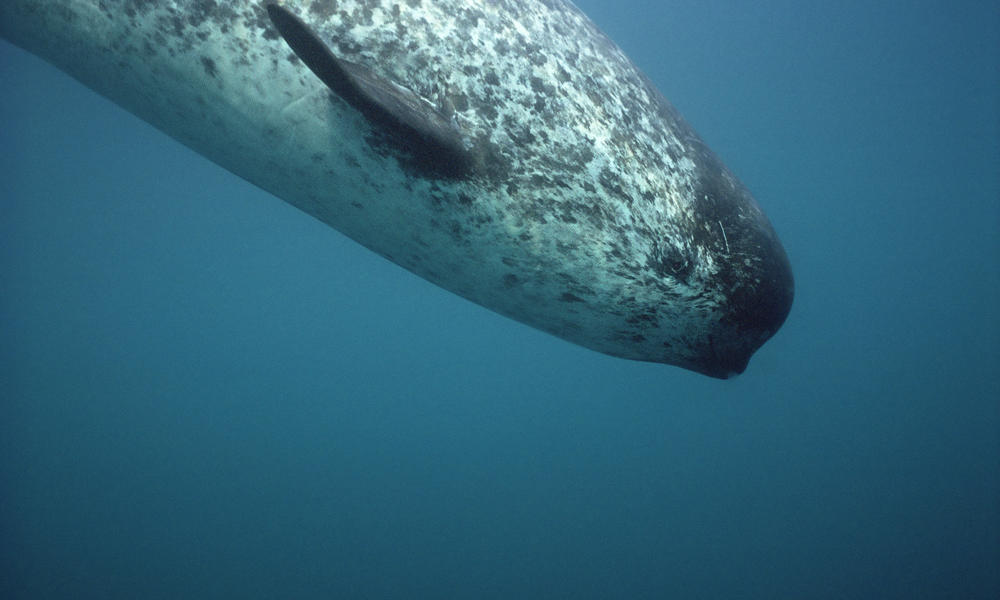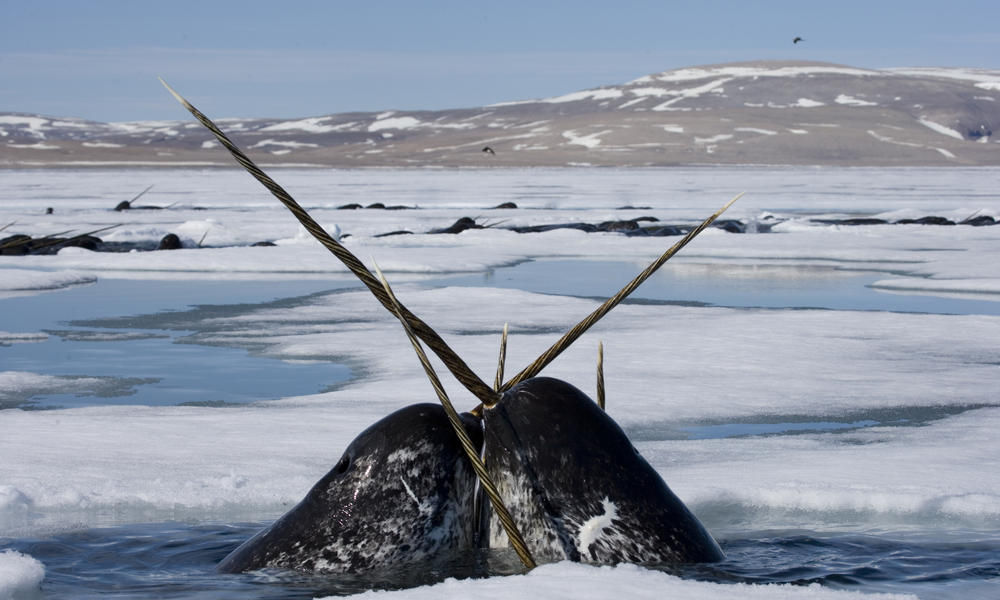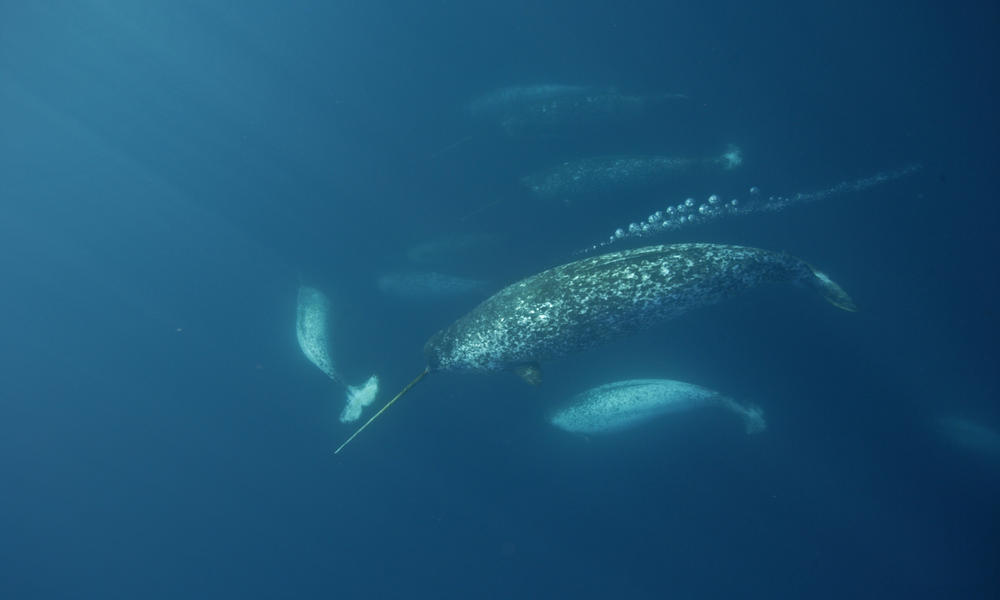Narwhal
Often dubbed the unicorns of the sea, narwhals are strange and beautiful creatures with long tusks protruding from their heads. Members of the population of more than 80,000 can weigh up to 4,200 pounds and grow as long as 17 feet in length. Read on to learn more about these fascinating animals.
1. What is a narwhal tusk?
The narwhal tusk—most commonly found on males—is actually an enlarged tooth with sensory capability and up to 10 million nerve endings inside. Some narwhals have up to two tusks, while others have none. The spiraled tusk juts from the head and can grow as long at 10 feet.
 © Paul Nicklen / National Geographic Stock / WWF-Canada
© Paul Nicklen / National Geographic Stock / WWF-Canada
2. Where do narwhals live?
Unlike some whale species that migrate, narwhals spend their lives in
the Arctic waters of Canada, Greenland, Norway and Russia. Most
narwhals winter for up to five months under sea ice in the Baffin
Bay-Davis Strait area.
 © Paul Nicklen / National Geographic Stock / WWF-Canada
© Paul Nicklen / National Geographic Stock / WWF-Canada
3. What threats do narwhals face?
Oil and gas development and climate change pose threats to narwhals.
Increased development means more shipping vessels, creating more
opportunities for collisions and more underwater noise that can
interfere with communication among the whales. WWF helps raise awareness
of and address the threat of noise pollution on narwhals and other
whales.
 © naturepl.com /Doug Allan / WWF-Canon
© naturepl.com /Doug Allan / WWF-Canon
4. What do narwhals eat?
Narwhals feed on Greenland halibut, Arctic and polar cod, squid and
shrimp. They do their chomping at the ice floe edge and in the ice-free
summer waters.
 © naturepl.com /Doug Allan / WWF-Canon
© naturepl.com /Doug Allan / WWF-Canon
5. How deep do narwhals dive?
Narwhals can dive about a mile deep in the ocean. Cracks in the sea ice above allow them to pop up for air when they need it.
 © Paul Nicklen / National Geographic Stock / WWF-Canada
© Paul Nicklen / National Geographic Stock / WWF-Canada
6. What color are narwhals?
Narwhals change color as they age. Newborns are a blue-gray,
juveniles are blue-black and adults are a mottled gray. Old narwhals are
nearly all white.
 © Paul Nicklen/National Geographic Stock/WWF-Canada
© Paul Nicklen/National Geographic Stock/WWF-Canada
Source: WWF
Cool
ReplyDeleteih comelnya
ReplyDeletekeren pisan
ReplyDeleteWow
ReplyDelete